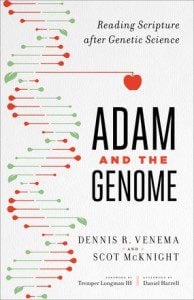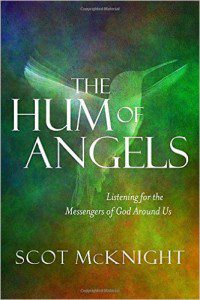 Karen: “As I headed east, toward home, I glimpsed at a young couple with a child in a stroller panhandling on the corner of the major highway that runs north-south through town. I just wanted to go home. Drink my coffee. Fix my edits. I didn’t make it half-a-block before I turned the car around.” Read the rest here.
Karen: “As I headed east, toward home, I glimpsed at a young couple with a child in a stroller panhandling on the corner of the major highway that runs north-south through town. I just wanted to go home. Drink my coffee. Fix my edits. I didn’t make it half-a-block before I turned the car around.” Read the rest here.
April’s special story about Judah: “Tears flooded my eyes and I’m sure my face looked like I’d seen a ghost. I gasped at Aster, “he understood you?!?” “Of course. Once he knows Amharic, it’s always in there.” she nonchalantly replied. I could hardly process what was happening. My son lived in Ethiopia for 2 1/2 years and has been home for over 2 years. For nearly half his life he’s barely heard Amharic. But it all rushed back to the surface. After an eternity of seconds I pulled myself together and begged her to speak more to him. She joyfully obliged. Throughout our 2-hour lunch Aster asked Judah in Amharic…”
Things turning 30 this year. (HT :mic)
Is the shroud 1st Century? This new study says Yes: “The new tests carried out in the University of Padua labs were carried out by a number of university professors from various Italian universities and agree that the Shroud dates back to the period when Jesus Christ was crucified in Jerusalem. Final results show that the Shroud fibres examined produced the following dates, all of which are 95% certain and centuries away from the medieval dating obtained with Carbon-14 testing in 1988: the dates given to the Shroud after FT-IR testing, is 300 BC ±400, 200 BC ±500 after Raman testing and 400 AD ±400 after multi-parametric mechanical testing. The average of all three dates is 33 BC ±250 years. The book’s authors observed that the uncertainty of this date is less than the single uncertainties and the date is compatible with the historic date of Jesus’ death on the cross, which historians claim occurred in 30 AD. The tests were carried out using tiny fibres of material extracted from the Shroud by micro-analyst Giovanni Riggi di Numana who passed away in 2008 but had participated in the1988 research project and gave the material to Fanti through the cultural institute Fondazione 3M.”
My colleague David Fitch thinks Tim Keller is too Niebuhrian: “Often (not always) creation and sphere sovereignty (we appeal to creation/inherent logic of society to work for justice) have been the terms by which evangelicals have sought to change in the world. We end up negating that Jesus is Lord bringing in His Kingdom via the Spirit in and through the church as a social entity. But the gospel is Jesus is Lord and He is the one bringing in renewal of all things.”
This is a daring act: “Last week in Egypt, a group of Russian photographers apparently climbed the Great Pyramid of Giza—hiding from guards for four hours after closing time before beginning the ascent. Climbing the pyramid, one of the photographers claims, carries a punishment of one to three years. But it was worth it. “I was speechless,” one wrote. “I felt a chilling delight, absolute happiness.”
Meanderings in the News
 On meals with adolescents, by Sharon Jayson: “Parents have heard it for years: Family dinners help kids avoid risky behaviors and may even help them in school. But new research shows that the more frequent these dinners, the better the adolescents fare emotionally, says new research published this week in the Journal of Adolescent Health. “The effect doesn’t plateau after three or four dinners a week,” says co-author Frank Elgar, an associate professor of psychiatry at McGill University in Montréal. “The more dinners a week the better.” With each additional dinner, researchers found fewer emotional and behavioral problems, greater emotional well-being, more trusting and helpful behaviors toward others and higher life satisfaction, regardless of gender, age or family economics.”
On meals with adolescents, by Sharon Jayson: “Parents have heard it for years: Family dinners help kids avoid risky behaviors and may even help them in school. But new research shows that the more frequent these dinners, the better the adolescents fare emotionally, says new research published this week in the Journal of Adolescent Health. “The effect doesn’t plateau after three or four dinners a week,” says co-author Frank Elgar, an associate professor of psychiatry at McGill University in Montréal. “The more dinners a week the better.” With each additional dinner, researchers found fewer emotional and behavioral problems, greater emotional well-being, more trusting and helpful behaviors toward others and higher life satisfaction, regardless of gender, age or family economics.”
Excellent perception according to (de)conversion theory: “Possibly, the religion one leaves behind carries over into the sort of atheism one embraces. If religion has little grip on one’s life, apostasy is no big deal and there will be few lingering effects. Hence the general apathy of my generation of ex-Catholics, which grew up with criticism of the Vatican by our parents’ generation in a culture that diluted religious dogma with an appreciation of life’s pleasures. Culture matters, because Catholics who grew up in papist enclaves above the rivers tell me that their upbringing was as strict as that of the Reformed households around them. Religion and culture interact to such a degree that a Catholic from France is really not the same as one from the southern Netherlands, who in turn is not the same as one from Mexico. Crawling on bleeding knees up the steps of the cathedral to ask the Virgin of Guadalupe for forgiveness is not something any of us would consider. I have also heard American Catholics emphasize guilt in ways that I absolutely can’t relate to. It is therefore as much for cultural as religious reasons that southern ex-Catholics look back with so much less bitterness at their religious background than northern ex-Protestants.
Egbert Ribberink and Dick Houtman, two Dutch sociologists, who classify themselves, respectively, as “too much of a believer to be an atheist” and “too much of a nonbeliever to be an atheist,” distinguish two kinds of atheists. Those in one group are uninterested in exploring their outlook and even less in defending it. These atheists think that both faith and its absence are private matters. They respect everyone’s choice, and feel no need to bother others with theirs. Those in the other group are vehemently opposed to religion and resent its privileges in society. These atheists don’t think that disbelief should be kept locked up in the closet. They speak of “coming out,” a terminology borrowed from the gay movement, as if their nonreligiousness was a forbidden secret that they now want to share with the world. The difference between the two kinds boils down to the privacy of their outlook.
I like this analysis better than the usual approach to secularization, which just counts how many people believe and how many don’t. It may one day help to test my thesis that activist atheism reflects trauma. The stricter one’s religious background, the greater the need to go against it and to replace old securities with new ones.”
The Pope’s “Latino” problem: “He is being hailed with pride and wonder as the “first Latino pope,” a native Spanish speaker born and raised in the South American nation of Argentina. But for some Latinos in the United States, there’s a catch: Pope Francis’ parents were born in Italy. Such recent European heritage is reviving debate in the United States about what makes someone a Latino. Those questioning whether their idea of Latino identity applies to Pope Francis acknowledge that he is Latin American, and that he is a special inspiration to Spanish-speaking Catholics around the world. Yet that, in their eyes, does not mean the pope is “Latino.” These views seem to be in the minority. But they have become a distinct part of the conversation in the United States as the Latino world contemplates this unique man and moment.”
Twelve lonely words.
Get some germs, Gisela Telis: “According to the hygiene hypothesis, bad things can happen if this early exposure doesn’t take place or if it doesn’t include the right microbes. The immune system can become overly sensitive, overreacting to non-threats such as pollen or dander as if they’re potentially harmful. When combined with certain genetic traits, this process can lead to conditions such as asthma and allergies, says Kathleen Barnes, an immunogeneticist at Johns Hopkins University who specializes in the genetics of asthma. Barnes’s work has revealed that although genes play a key role in the development of asthma, changing a population’s exposure to microbes — by protecting them from parasitic diseases, for example — can make asthma rates rise. That suggests that hygiene may also play a role in asthma. “It can’t all be due to genes, because if we look at the prevalence of asthma or diseases of inflammation over the past 50 years, we see it’s definitely on the rise,” Barnes says. “It’s some interaction between the genes and the environment that’s causing these rates to skyrocket.”
Good news from science: “What is it about the extra chromosome inherited in Down syndrome — chromosome 21 — that alters brain and body development? Researchers at Sanford-Burnham Medical Research Institute (Sanford-Burnham) have new evidence that points to a protein called sorting nexin 27, or SNX27. SNX27 production is inhibited by a molecule encoded on chromosome 21. The study, published March 24 in Nature Medicine, shows that SNX27 is reduced in human Down syndrome brains. The extra copy of chromosome 21 means a person with Down syndrome produces less SNX27 protein, which in turn disrupts brain function. What’s more, the researchers showed that restoring SNX27 in Down syndrome mice improves cognitive function and behavior. “In the brain, SNX27 keeps certain receptors on the cell surface — receptors that are necessary for neurons to fire properly,” said Huaxi Xu, Ph.D., professor in Sanford-Burnham’s Del E. Webb Neuroscience, Aging and Stem Cell Research Center and senior author of the study. “So, in Down syndrome, we believe lack of SNX27 is at least partly to blame for developmental and cognitive defects.”
This stinks: “Seems cheese crime is booming: Today we get news that an Illinois man is being charged with trying to steal 42,000 pounds of munster cheese from a Wisconsin creamery. Last yearwe had news of the “mozzarella mafia,” which was smuggling American cheese into Canada and selling it for a third of the price. In the latest incident, WISC-TV reports that Veniamin Konstantinovich Balika, 34, allegedly drove his semi truck to K&K Cheese in Cashton, Wisconsin. According to authorities, he provided fake documentation and the company loaded roughly $200,000 worth of cheese onto his truck.”











